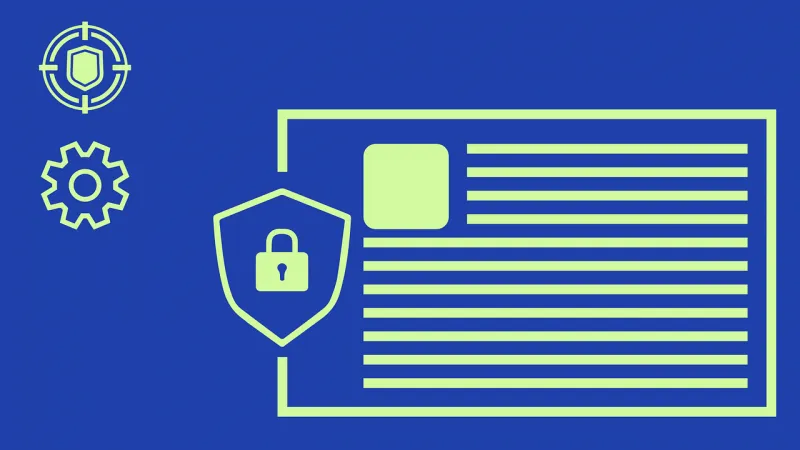Offboarding cybersecurity can often be overlooked amidst the hustle and bustle of an organisation’s daily operations. However, due to the inevitably dynamic nature of any company’s workforce which sees changes on a regular basis, prioritising strong offboarding cybersecurity should be paramount to every employer.
Failing to do so creates significant risk for very costly data breaches by former employees, an occurrence that has grown in frequency in recent years and is unsurprising when considering that one in three ex-employees maintain access to workplace systems and programs long after their time with an organisation.
Lacking adequate offboarding cybersecurity practices can allow unauthorised individuals to access confidential information such as client and customer data, financial systems and trade secrets which can be used to compromise and threaten the company.
In order to counter the inherent data security risk that occurs when employees are leaving your workforce, it’s important to do your due diligence to make sure that your offboarding cybersecurity is strong and effective in preventing access to valuable data.
This article will explore the importance of offboarding cybersecurity and present a few essential best practices for avoiding the potential consequences of an inefficient offboarding cybersecurity process and policy.
Why is offboarding cybersecurity so important?
When it comes to protecting the intellectual property of the company, most employers are aware of and take strong measures to mitigate the threat of external parties gaining access to sensitive data. However, internal risks are not given this same importance, which is particularly problematic in a post-pandemic world where remote work and outsourced hires have become far more heavily utilised.
No matter how much you trust your employees, research has shown that a significant ratio of company personnel ‘snoop’ through sensitive data and that as much as 88% of IT employees would steal in the scenario they were fired. This potential for insincere motives to develop within employees after being fired or leaving an organisation poses huge implications towards the potential loss or theft of confidential workplace information. Additionally, malicious intent is not always necessary, in many cases it is simply due to negligence and the sheer lack of adequate checks in place to ensure employee access is correctly revoked.
Many employers fail to account for this data exposure risk and are caught off guard when it occurs which can make it even more difficult to manage without long-term consequences. The need for an effective, thorough, and formal offboarding process is hence essential for avoiding such situations from impacting the integrity and security of any organisation.
How can you ensure offboarding cybersecurity?
The best offboarding cybersecurity strategy for your company will depend on its specific needs, resources, workforce and how it operates. However, there are some practices you can adopt within your approach that will help mitigate the risk and protect your intellectual property no matter what type of organisation you run.
1. Establish an offboarding cybersecurity policy
Having an actual process put into place that covers all offboarding cybersecurity requirements is extremely convenient as it essentially functions as a checklist against which a departing employee’s access to company systems can be removed and verified.
The process can be applied to all employees regardless of their role and minimises the risk of any access controls being forgotten. It also makes it easier to track and address where any errors may have occurred in the event of data theft and work on adapting and improving the process for the future.
A few examples of steps to include in your offboarding cybersecurity policy are:
- Ensuring all company equipment is returned (portable devices, USBs, physical documents etc.)
- Deactivating access to all company accounts, services and servers
- Updating all levels of authentication (passwords, biometrics etc.)
- Making sure the employee is aware of the company’s policy regarding intellectual property
2. Secure access points
In order to ensure that access to company systems and services is revoked when an employee leaves, you must first know how many access points are available in the company, their type and the authentication requirements one must meet in order to utilise them. This not only includes digital and cloud-based resources but also equipment such as company ID cards used to access company spaces or vehicles provided for work purposes.
3. Stay vigilant
Most employee terminations or resignments come with some warning and employers should use this time to make sure digital activity is carefully monitored. Keeping an eye out for actions such as duplicating files, sending emails to personal accounts or accessing systems beyond their authorisation level could all indicate that there is some degree of a cybersecurity breach occurring. When the employee leaves, it’s important to secure the systems and possibly change any passwords and ensure that all personnel are reminded to no longer share any confidential information with the ex-employee.
4. Consider having different procedures for different types of termination
Voluntary and involuntary terminations come with different risks to offboarding cybersecurity and they should be treated accordingly. A voluntary termination should not come as surprise and as such you may have greater time and ability to ensure that all offboarding cybersecurity principles are adhered to. However, in the case of an involuntary termination, the now ex-employee may have had to leave rather suddenly and this could interfere with the normal process.
Furthermore, the experience of an involuntary termination may, in some cases, foster feelings of resentment which could result in a greater threat to the security of the organisation. As an employer, you should be prepared for both cases and have processes in place that allow you to maximise offboarding cybersecurity no matter what type of termination took place.

5. Review your offboarding cybersecurity policy regularly
A company’s digital tools and assets are open to change and be updated as new technologies enter or company ventures expand. It is important to review offboarding cybersecurity processes each time this occurs to ensure that it is up to date and able to perform adequately with any changes made to the organisation’s online tools.
Furthermore, regular reviews of the policy allow potential risks identified and continuous improvements to be made. If a risk is unable to be mitigated in time, the policy should be examined to assess if the threat was preventable and where the fault lies within its requirements.
6. Onboarding processes and training programs should include offboarding cybersecurity
All employees must be aware of the cybersecurity requirements of the organisation, the importance of them to the company’s function and health as well as the potential consequences if they do not comply. In order to establish this and the seriousness with which you consider cybersecurity, the onboarding process of all employees should thoroughly cover the offboarding process that is undertaken and the obligations of the employees in such scenarios.
Training related to cybersecurity should also be offered in which offboarding is also covered so that employees are regularly reminded of the organisation’s stance on the issue.
Each time an employee is provided with access to authorised systems or digital assets, they should be reminded of their responsibilities and cautioned against malpractice. Maintaining a strong position on the issue will deter both negligence and malpractice from employees and contribute to the overall security of the organisation.
Let's Get Started
Interested in learning more about how Polonious can help?
Get a free consultation or demo with one of our experts


